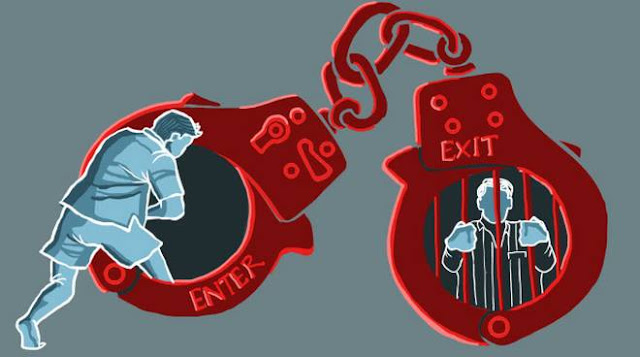
WHAT IS JUVENILE DELINQUENCY?
A juvenile delinquent refers to a person who has not yet attained the statutory age of majority participating in crimes and those who are at conflicts with the law. There are specific provisions in the legal system for dealing with such offenders, such as juvenile courts and juvenile detention centers. In certain cases, where the nature of the crime is severe, they may also be charged as adults. In recent years there has been an astonishing increase in juvenile crimes posing a great threat to their individual development as well as the development of the society.
REALITY VS FANTASY
Teenagers and young adults are at an impressionable age, mature enough to want to make their own choices but not mature enough to grasp the consequences of their actions. The attributes of the modern western society are deftly sinking its paws into the young and unprotected minds of our teens and adolescents. In this fast paced virtual world, the effects of technology and social media and its impact can no longer be ignored. In our close knit Indian society, freedom to make our own decisions and choosing how to live our lives has always been a privilege only to be awarded when you are old enough and independent enough. That is not the case anymore. Kids these days want everything now, from expensive mobile phones, bikes, clothes, etc. and sometimes they are ready to go to any lengths to get what they want. The peer pressure to look cool and hip also drives them into doing immoral deeds. They now want everything handed out to them instead of wanting to work for it, and when they are unable to procure it that way, they resort to criminal activities.
FAMILY AND FRIENDS
The environment in which a person lives consists of the family, neighbors, friends, the socio economic condition of the community. Family is the first interaction any child has on his birth. Family has a huge influence on the development of a child. A warm and loving family will create a positive atmosphere for the nourishment of a child but when the family is cold, neglectful, harsh, and rejecting, the child will develop hatred, hostility, and distrust towards people. Broken and poor homes often lead to runaways. This often leads them straight into a life of crime. Children who escape their abusive homes are often starving for love, comfort and left to their own devices often resort to theft to survive.
DRUG ABUSE
The incidence of drug abuse is higher in children and adolescents than that of the general population. The usage of drugs being illegal in India is like a forbidden fruit for them. The enigma surrounding drugs and their utter lack of control often makes them vulnerable to it. The addiction to drugs has a palpable and devastating effect on their growing mind and body. It weakens their ability to think clearly and pushes them into a mental state where they constantly think of ways to get the next fix. This often leads them into the shackles of drug trafficking and prostitution.
CURBING THE
EFFECTS OF THIS PANDEMIC
The future of this country depends upon the young generation. A generation of people with well-formed minds and conscientious behavior is the path to progress as opposed to drug addled teens with violent and destructive tendencies. As a society, it is our duty to ensure that children are provided with a loving and tender environment to grow with equal opportunities for everyone.
There are several NGO’s in India working to reform juvenile delinquents and to educate the children so they don’t resort to criminal activities. Lakshyam is fulfilling its duty towards street children who come from poor homes by providing them free primary education as well as teaching them moral values and enrolling them into schools. Lakshyam also runs a volunteer program where people can come and teach the children and be a part of a better tomorrow.


